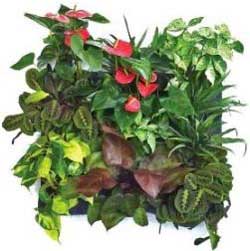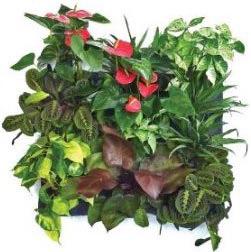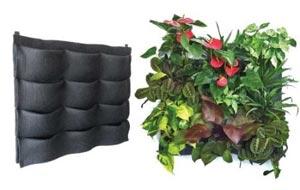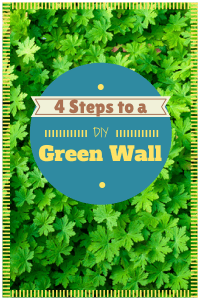Vertical gardens provide elegant outdoor decor, however, large planters can weigh a lot. On the other hand, pocket planters give you a simple, lightweight solution for growing plants on a wall. (And, a low-cost kit makes installation easy!)
There are a few ways to lighten the load of a vertical garden besides making a smaller garden (the obvious =)).
First are the plants themselves.
Second, a soil that is less dense can add less weight to the garden.
Third, the container itself contributes pounds, and when made of lighter weight material, this can make a big difference in overall weight.
1. Plants for a Lightweight Vertical Garden
First, let’s talk plants. Smaller plants of course will weight less. Also, plants that don’t grow lots of roots will require less soil. Herb gardens can be perfect for creating a lightweight garden. Other factors to think about are the lifetime of a plant and its growth rate. Annuals can be replaced each year with new, small plants.
Varieties that grow slowly, like succulents, will of course stay small and add less weight to your container. Succulents are also nice because some don’t require a lot of water, which also adds pounds.
2. Soil for Vertical Planters
Obviously, using less soil will lighten the load of the garden. Therefore, it’s a good idea to consider planters that are shallow or have small sections. smaller plans that require less soil will also help.
You can also buy or “make” lighter weight soil, The first option is to buy lightweight potting soil at your local nursery or home improvement store. The second option is to make your own by mixing perlite, peat moss and/or vermiculite in with your regular potting soil. In addition to weighing less, these mixtures also help with aerating the soil, improving drainage and preventing the soil from compacting.
3. The Container that Hangs Vertically
Planters made of lighter materials (ie plastic vs wood) can significantly reduce your garden’s weight. However, these planters can sometime be less sturdy and durable, so you want to be careful.
A new type of planter that has recently come out incorporates recycled nylon felt with a plastic backing – creating a 3 foot by 2 foot container that weighs less than 2 pounds. Seriously!
Not only is it lightweight, it’s highly durable and recycled. At this weight, you can build a simple frame out of wood to enclose your garden – or none at all. As you can see by the photo – the plants look great even without a frame.
Another cool feature about this planter design is that little soil is required. The felt allows proper drainage and lets plants breathe, so they stay healthy.
Gutter gardens can also work, because they provide a shallow planting area. Plastic gutters are lightweight, yet are made of heavy duty material to stand up to storms, rain water, etc..




